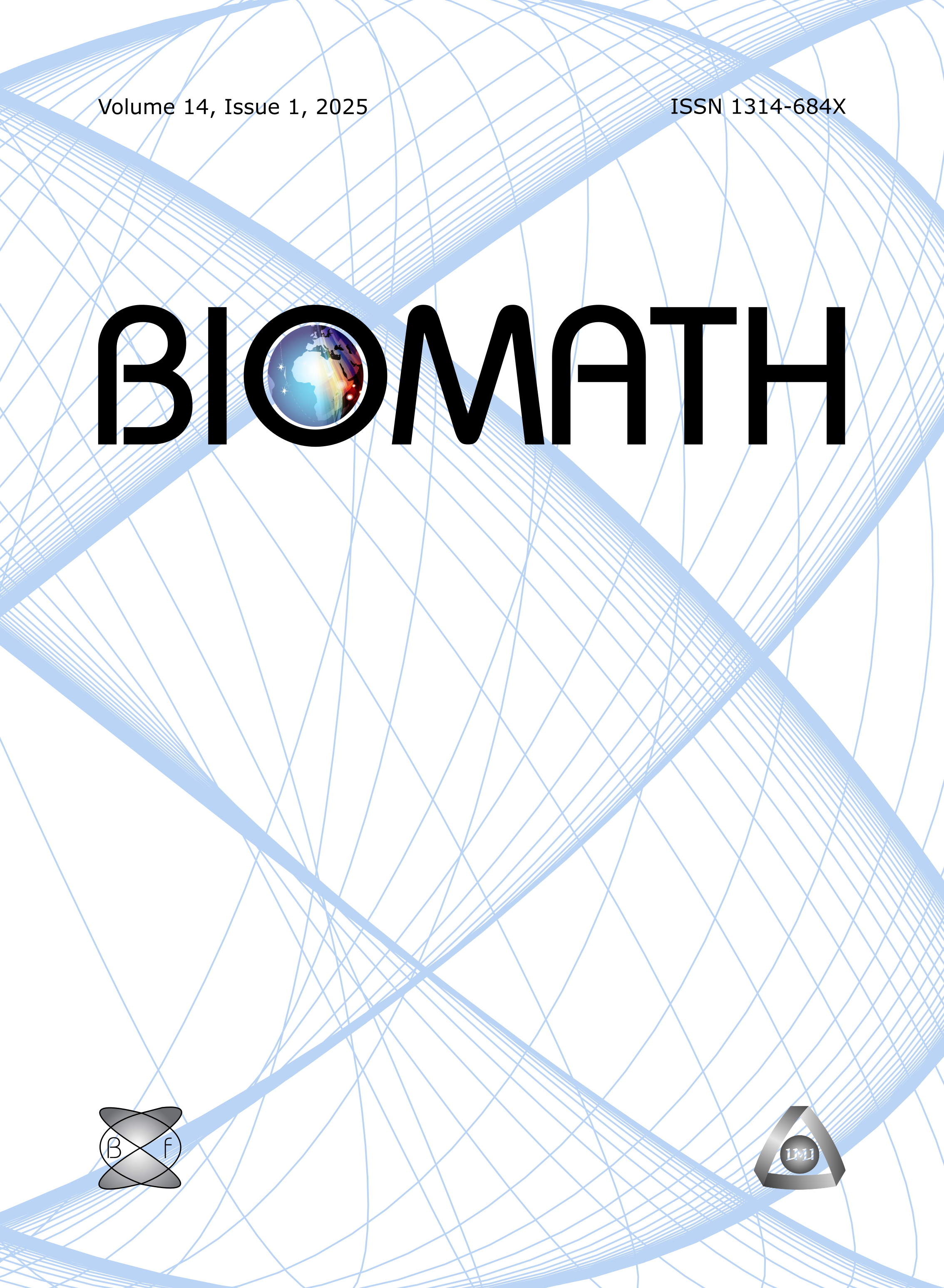Optimal control analysis of combined chemotherapy-immunotherapy treatment regimens in a PKPD cancer evolution model
DOI:
https://doi.org/10.11145/j.biomath.2020.02.137Keywords:
Mathematical oncology, dynamical systems, optimal controlAbstract
The author constructs a mathematical model capturing tumor-immune dynamics, incorporating the evolution of drug resistance, pharmacokinetics and pharmacodynamics of administered drugs, and immunotherapy possibilities. Numerical simulations are performed to analyze the model under a variety of treatment possibilities. A sensitivity analysis is performed to determine the parameters contributing the most to the variance in effector cell, resistant, and sensitive tumor cell populations. Then, a detailed optimal control analysis is performed, along with a numerical simulation of optimal treatment profiles for a hypothetical patient.References
Birkhead BG, Rankin EM, Gallivan S, Dones L, Rubens RD (1987). A Mathematical Model of the Development of Drug Resistance to Cancer Chemotherapy. Eur. J. Cancer Clin. Oncology, 23(9), 1421-1427.
Bukkuri A (2019). Optimal control analysis of combined anti- angiogenic and tumor immunotherapy. Open Journal of Mathematical Sciences, 3, 349-357.
L. G. de Pillis, W. Gu, and A. E. Radunskaya (2006). Mixed immunotherapy and chemotherapy of tumors: Modeling, applications and biological interpretations. Journal of Theoretical Biology, 238(4):841–862.
Athanassios Iliadis and Dominique Barbolosi (2000). Optimizing Drug Regimens in Cancer Chemotherapy by an Efficacy–Toxicity Mathematical Model
V. A. Kuznetsov, I. A. Makalkin, M. A. Taylor and A. S. Perelson (1994). Nonlinear dynamics of immunogenic tumors: Parameter estimation and global bifurcation analysis. Bull. Math. Biol., 56(2): 295—321.
Lai X, Friedman A (2017). Combination therapy of cancer with cancer vaccine and immune checkpoint inhibitors: A mathematical model. PLoS ONE 12(5)
Liao KL, Bai XF, Friedman A (2014). Mathematical modeling of interleukin-27 induction of anti-tumor T cells response. PLoS ONE 9(3)
Zhang XY, Trame MN, Lesko LJ, Schmidt, S (2015). Sobol Sensitivity Analysis: A Tool to Guide the Development and Evaluation of Systems Pharmacology Models. CPT Pharmacometrics Syst. Pharmacol. 4, 69-79.
Elbarbary RA, Miyoshi K, Myers JR, Du P, Ashton JM, Tian B, Maquat LE (2017). Tudor-SN-mediated endonucleolytic decay of human cell microRNAs promotes G1/S phase transition.; Science (New York, N.Y.); Vol 356(6340).
Burden T, Ernstberger J, Fister R (2004). Optimal Control Applied to Immunotherapy. Discrete and Continuous Dynamical Systems, 4(1), 135–146.
Fister R, Lenhart S, McNally J (1998). Optimizing Chemotherapy in an HIV , Elec. J.DE., 32, 1–12.
Downloads
Published
Issue
Section
License
The journal Biomath is an open access journal. All published articles are immeditely available online and the respective DOI link activated. All articles can be access for free and no reader registration of any sort is required. No fees are charged to authors for article submission or processing. Online publications are funded through volunteer work, donations and grants.
Authors who publish with this journal agree to the following terms:
- Authors retain copyright and grant the journal right of first publication with the work simultaneously licensed under a Creative Commons Attribution License 4.0 that allows others to share the work with an acknowledgement of the work's authorship and initial publication in this journal.
- Authors are able to enter into separate, additional contractual arrangements for the non-exclusive distribution of the journal's published version of the work (e.g., post it to an institutional repository or publish it in a book), with an acknowledgement of its initial publication in this journal.
- Authors are permitted and encouraged to post their work online (e.g., in institutional repositories or on their website) prior to and during the submission process, as it can lead to productive exchanges, as well as earlier and greater citation of published work (See The Effect of Open Access).

